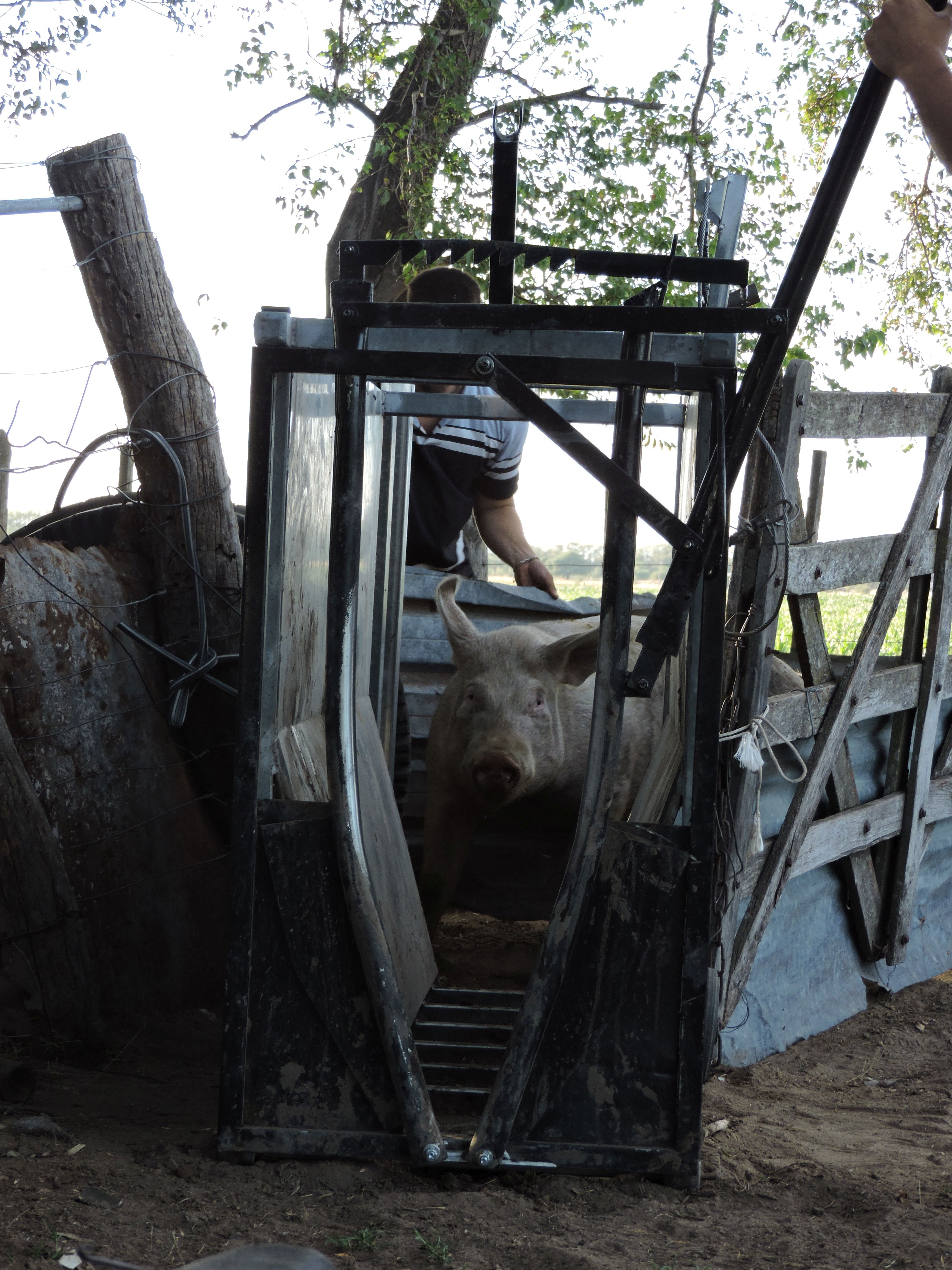Sanitary evaluation of swine herds in peri-urban farming of Uriburu, La Pampa
DOI:
https://doi.org/10.19137/cienvet202224103Keywords:
Brucella suis, Aujeszky´s disease virus, swine healthAbstract
The objective of this study was to determine the presence antibodies of Brucella suis and of Aujeszky’s Disease Virus in swine herds located in peri-urban limits of Uriburu (La Pampa). A total of 290 breeding animals from 31 swine farmers were serologically sampled. For the detection of agents against Brucellosis, the serum lot was processed by the agglutination technique with Buffered Plate Antigen (BPA) and Fluorescent Polarization (FPA) according to Nielsen et al.,1999. For Aujeszky’s Disease Virus, a commercial blocking ELISA kit was used for the detection of specific antibodies from Aujeszky’s Disease Virus glycoprotein E (CIVTEST — Laboratorios HIPRA S. A, Girona, Spain). Only 1.03% of sampled animals resulted positive for Brucella suis distributed in 3 farms (9.7%). On the other hand, 16 positive cases for Aujeszky’s Disease Virus (5.52%) were detected in 8 farms (25.8%). Only 2 farms share positive cases for Brucella suis and Aujeszky’s Disease Virus, which reduces to 9 farms (29%) that have been affected by either of these two diseases. Due to the relevant information obtained, the need to continue with the research is highlighted, expanding the sampling to other towns within La Pampa province as well as to determine the presence of other etiological agents.
Downloads
References
Nielsen K, Gall D, Smith P, Vigliocco A, Pérez B, Samartino L, et al. Validation of the fluorescence polarization assay as a serological test for the presumptive diagnosis of porcine brucellosis. Vet Microbiol. 1999; 68: 245-53.
SENASA Servicio Nacional de Sanidad y Calidad Agroalimentaria. Disponible en:// www.senasa.gob.ar/cadena-animal/porcinos/produccion-primaria/sanidad-animal/ enfermedades-y-estra-sani/enfermedad-de-aujeszky-ea
Food and Agriculture Organization of the United Nations/World Organisation for Animal Health/World Bank. Good practices for biosecurity in the pig sector–Issues and options in developing and transition countries. FAO Animal Production and Health Paper 2010; 169. Disponible en: http: www.fao.org3a-i1435e.pdf
Dibarbora M, Cappuccio JA, Aznar MN, Bessone FA, Piscitelli H, Pereda AJ, Pérez D R. Detección serológica de Brucella suis, virus de influenza y virus de la enfermedad de Aujeszky en criaderos porcinos familiares de menos de 100 madres en Argentina. Rev. Arg. Microbiol. 2017; 49(2): 158-165.
Franco-Paredes C, Chastain D, Taylor P, Stocking S, Sellers B. Boar hunting and brucellosis caused by Brucella suis. Travel Med.Infec. Dis. 2017; 16: 18-22.
Castro HA, González SR, Prat MI, Baldi PC. Detección de anticuerpos anti-Brucella spp. en cerdos mediante técnicas de aglutinación y ELISA indirecto en las provincias de Buenos Aires y La Pampa, Argentina. Rev. Arg. Microbiol. 2006; 38(2):75-78.
Müller T, Hahn EC, Tottewitz F, Kramer M, Klupp BG, Mettenleiter TC, Freuling C. Pseudorabies virus in wild swine: a global perspective. Arch Virol. 2011; 156 (10):1691-705.

Downloads
Published
How to Cite
Issue
Section
License
Al momento de enviar sus contribuciones, los colaboradores deberán declarar , de manera fehaciente, que poseen el permiso del archivo o repositorio donde se obtuvieron los documentos que se anexan al trabajo, cualquiera sea su formato (manuscritos inéditos, imágenes, archivos audiovisuales, etc.), permiso que los autoriza a publicarlos y reproducirlos, liberando a la revista y sus editores de toda responsabilidad o reclamo de terceros , los autores deben adherir a la licencia Creative Commons denominada “Atribución - No Comercial CC BY-NC-SA”, mediante la cual el autor permite copiar, reproducir, distribuir, comunicar públicamente la obra y generar obras derivadas, siempre y cuando se cite y reconozca al autor original. No se permite, sin embargo, utilizar la obra con fines comerciales.






4.png)


7.png)



